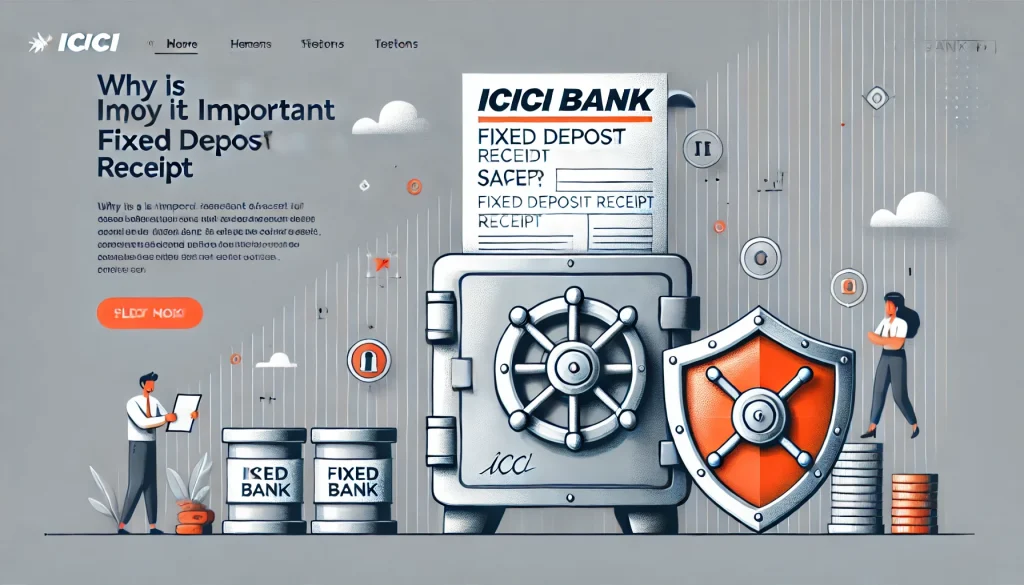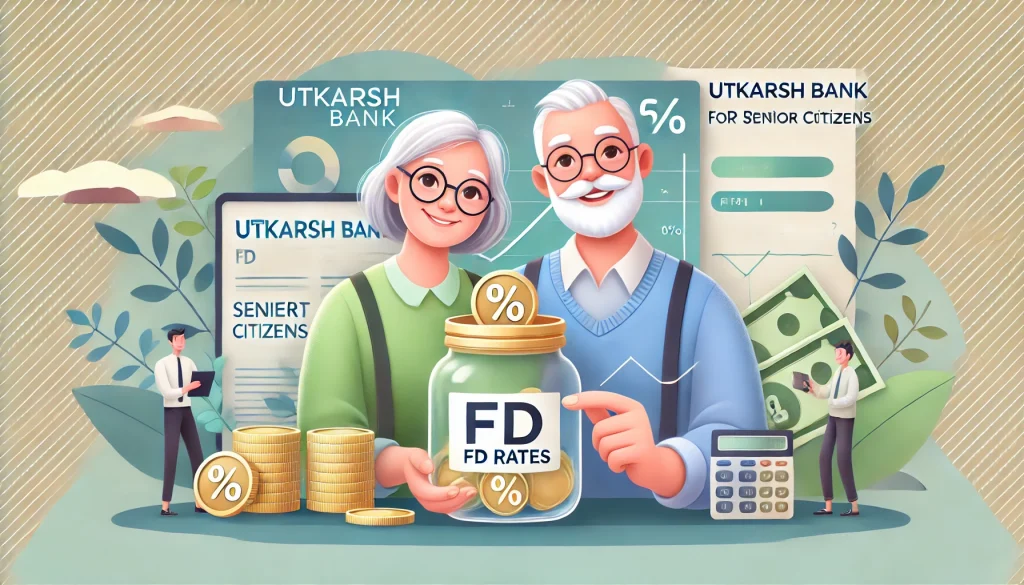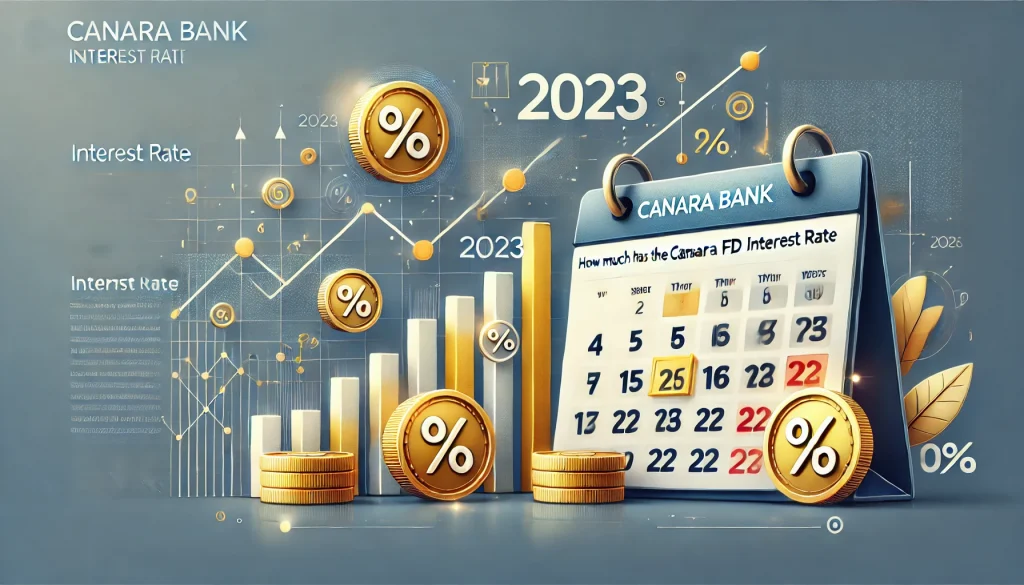
Are you looking for a risk-free way to invest your money? Look no further than a fixed deposit (FD) account. FDs pay higher interest rates than savings accounts and are an excellent choice for those looking for a consistent return on their investment.
Whether you’re a first-time investor or a seasoned investor looking for competitive rates – this blog will help you get the best interest on a fixed deposit.
So let’s dive right in to look at the best FD interest rates available in India in 2023
What are Fixed Deposits?
Fixed deposits (FDs) are a popular investment vehicle in India due to their security and predictability. When you make a fixed deposit, you are lending money to a bank or financial institution for a set period, which can range from seven days to ten years.
In exchange, the bank will pay you a fixed interest rate that is usually higher than the rate offered on savings accounts.
There are several types of fixed deposit accounts available in India:
- Regular Fixed Deposit Account: These are the traditional fixed deposit accounts that allow individuals to deposit a lump sum of money at a fixed interest rate for a set time ranging from 7 days to 10 years.
- Tax-saving Fixed Deposit Account: These come with a 5-year lock-in period that provides tax benefits under Section 80C of the Income Tax Act.
- Short-term Fixed Deposit Account: These are held for a shorter period, usually less than a year. They pay more interest than savings accounts but less than long-term fixed deposits.
- Cumulative Fixed Deposit: For this FD account, the interest is added to the principal amount at the end of each quarter and the final maturity amount is paid at the term’s end.
- Recurring deposit: It is a type of fixed deposit in which an individual can invest a set amount of money at regular intervals, usually monthly, for a set tenure.
- Flexi Fixed Deposit: In a Flexi fixed deposit the depositor can withdraw a portion of the deposit amount before the maturity date without breaking the deposit or incurring any penalties.
- Senior Citizen Fixed Deposit: These accounts are specifically designed for senior citizens and offer higher interest rates than regular fixed deposit accounts.
- NRE (Non-Resident External) Fixed Deposit: NRE fixed deposit accounts are available to Non-Resident Indians (NRIs) who wish to park their foreign income in India.
Now, let’s take a look at the prevailing FD rates in India in 2023.
Best Bank Fixed Deposit Rates In India in 2023
Here are a few banks that give the best interest on fixed deposits.
Best Bank FD Rates for Public Sector Banks
| Public Sector Banks | For one year | 3-year period | 5 years |
| SBI Bank | 6.75 | 6.25 | 6.25 |
| UCO Bank | 6.75 | 6.30 | 6.10 |
| Bank of Baroda | 6.75 | 6.75 | 6.25 |
| Punjab National Bank | 6.75 | 6.75 | 6.50 |
| Bank of Maharashtra | 6.15 | 6.00 | 5.75 |
| Bank of India | 6.00 | 6.50 | 6.00 |
| Canara Bank | 6.75 | 6.50 | 6.50 |
| Indian Overseas Bank | 6.40 | 6.50 | 6.50 |
| Bank of India | 6.00 | 6.50 | 6.00 |
| Central Bank of India | 6.75 | 6.00 | 6.00 |
Best Bank Fixed Deposit Interest Rates for Private Sector Banks
| Private Sector Banks | For one year | 3-year period | 5 years |
| IDFC First Bank | 6.75 | 7.50 | 7.00 |
| IDBI Bank | 6.75 | 6.25 | 6.25 |
| HDFC Bank | 6.50 | 7.00 | 7.00 |
| ICICI Bank | 6.60 | 7.00 | 7.00 |
| Axis Bank | 6.75 | 7.00 | 7.00 |
| IndusInd Bank | 7.00 | 7.50 | 7.25 |
| RBL Bank | 7.00 | 7.00 | 7.00 |
| Yes Bank | 7.00 | 7.00 | 7.00 |
| DCB Bank | 7.25 | 7.85 | 7.60 |
| Karnataka Bank | 6.80 | 5.75 | 5.75 |
| Kotak Mahindra Bank | 6.75 | 6.50 | 6.20 |
Best Bank Fixed Deposit Rates for Tax Saving FDs
| Banks | Normal Rates | Senior Citizen Rates |
| Axis Bank | 7.00% | 7.75% |
| Bank of Maharashtra | 5.75% | 6.25% |
| SBI | 6.25% | 6.75% |
| HDFC Bank | 7.00% | 7.50% |
| ICICI Bank | 7.00% | 7.50% |
| IndusInd Bank | 6.75% | 7.50% |
| Bank of Maharashtra | 5.75% | 6.25% |
| Yes Bank | 7.00% | – |
| IDFC First Bank | 7.00% | 7.50% |
| IDBI Bank | 6.25% | 7.00% |
| Punjab National Bank | 6.50% | 7.00% |
| Suryoday Small Finance | 6.75% | 7.25% |
| Jammu & Kashmir Bank | 6.50% | 7.00% |
| Union Bank of India | 6.70% | 7.20% |
Best Fixed Deposit Interest Rates of NBFCs
| NBFCs | Normal Rates | Senior Citizen Rates |
| Utkarsh Small Finance FD | 8.00% | 8.75% |
| Fincare Small Finance Bank FD | 8.00% | 8.50% |
| Jana Small Finance Bank FD | 7.55% | 8.50% |
| Mahindra Finance FD | 7.50% | 7.55% |
| Sundaram Finance FD | 7.30% | 7.80% |
Best FD Interest Rates of Foreign Banks
| Foreign Banks | For 1 – 2 years | For 3 – 5 years | For 5 – 10 years |
| Standard Chartered | 6.15 – 6.25% | 6.10% | 6.10% |
| Deutsche Bank | 6.50% | 7.00% – 7.25% | 7.50% |
| Citi Bank | 7.25% | 3.50% | |
| DBS Bank | 6.00% – 6.50% | 6.25% | 6.25% |
| Barclays Bank | 5.86% to 5.93% | 5.93% | 5.93% |
| J.P. Morgan Chase | 4.89% | 4.89% | 4.89% |
Now, let’s explore some of the advantages and disadvantages associated with fixed deposit accounts.
Advantages of fixed deposits:
- Safety: Because they are offered by banks and financial institutions regulated by the Reserve Bank of India, FDs are considered a safe investment option.
- Guaranteed Returns: Fixed deposit interest rates are guaranteed, which means you know exactly how much you will earn on your investment.
- Predictability: FDs provide a fixed rate of return, making budgeting and financial planning simple.
- Liquidity: Most banks permit early withdrawal of FDs, though the interest rate offered is lower than the initial rate.
Disadvantages of fixed deposits:
- Low-interest rates: The interest rate on a fixed deposit may be lower than the interest rate on other investment options such as stocks, mutual funds, and so on.
- Inflexibility: You cannot withdraw money from a fixed deposit before the maturity date without incurring a penalty.
- Inflation: Fixed-deposit returns may not be sufficient to keep up with inflation, which means your money’s purchasing power may decline over time.
- Lack of diversification: Having all of your money in a single fixed deposit account increases the risk of losing it if the bank runs into financial difficulties.
FAQs
Fixed deposits (FDs) are low-risk, low-return investments that provide a guaranteed return for a set period. They should be opted for if you do not want to take on much risk, but their returns may be lower than those of other investment options.
A fixed deposit typically has a minimum period of 7 days and a maximum period of up to 10 years. Certain types of deposits, such as senior citizen fixed deposits, may be eligible for longer terms from some banks.
FDs provide a guaranteed return with little risk, whereas gold provides a safe haven and a hedge against currency depreciation and price volatility. The choice between the two is determined by your investment objectives and risk tolerance.
The interest on FD is taxable. If your total interest income from all FDs with a bank in a year is less than Rs 40,000, the bank cannot deduct any TDS. In the case of a senior citizen aged 60 and above, the limit is Rs 50,000.


